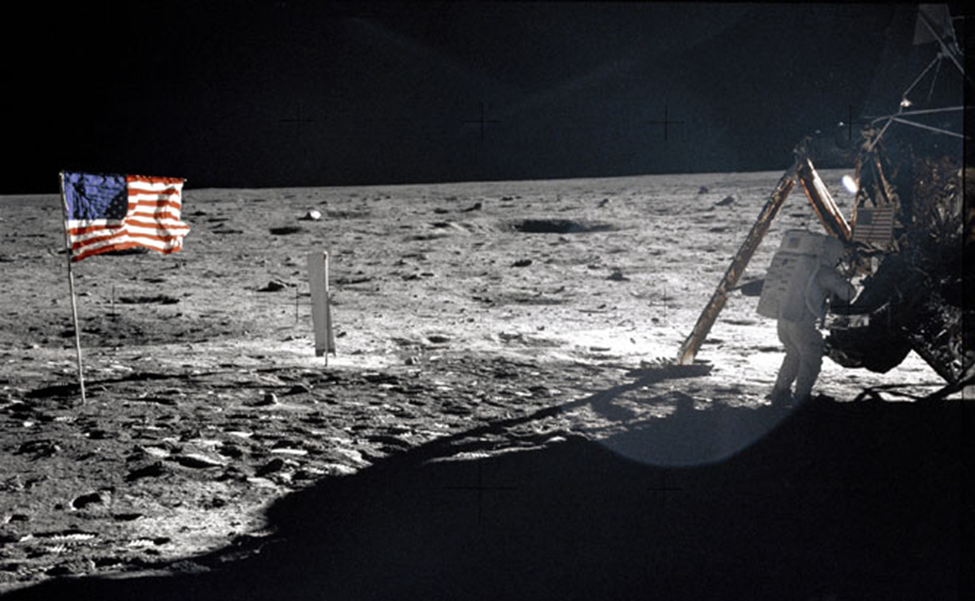AI Race Mirrors Historic Competition for Technological Supremacy
Hello, Reader.
1 part 1940s Manhattan Project
1 part 1960s Space Race
These elements form the basis of the current global race to develop leading AI technologies.
Similar to the Manhattan Project, the AI race is a high-stakes challenge aimed at mastering powerful technologies with vast implications. Recently, during an AI “jam session” at the Oak Ridge National Laboratory, U.S. Energy Secretary Chris Wright drew parallels between today’s AI advancements and the World War II effort to develop nuclear weapons.
“We have another completely transformative technology that’s just coming out, just hitting critical mass, and I can’t even imagine three, four, five years from now how different our world will be,” Wright stated. His comments were particularly poignant given that Oak Ridge served as the administrative headquarters for the Manhattan Project and played a significant role in America’s enriched uranium efforts.
This AI race is akin to the Space Race—a contest for dominance in a new, unrestricted frontier and a competition against rival nations. AI holds the potential to create or destroy on an unprecedented scale; hence, the U.S. aims to adopt a comprehensive strategy to harness these capabilities before others do.
In today’s Smart Money, I will explore what the Space Race suggests about the AI Race ahead. Historical context indicates that investors in 1960s space-related companies reaped considerable benefits. We will also examine the strategic initiatives the U.S. is taking to lead in the AI Race and highlight potential investment opportunities for the 2020s.
Let’s dive in.
One Small Step for Man…
The 1957 launch of Sputnik by the Soviet Union marked the dawn of the Space Race, igniting a fierce competition between the USSR and the United States. Both countries were apprehensive about losing control of space and the potential long-term advantages that a rival nation could gain.
The U.S. response was swift, leading to Project Apollo with the ambitious objective of landing a man on the moon. As President John F. Kennedy stated during a 1962 speech at Rice University,
This generation does not intend to founder in the backwash of the coming age of space. We mean to be a part of it. We mean to lead it… However, these national pledges can only be realized if we are first, and therefore, we intend to be first…For space science, like nuclear science and all technology, has no conscience of its own. Whether it will be a force for good or ill depends on man…
The Apollo program mobilized 400,000 personnel, involved 20,000 industrial firms and academic institutions, and required an investment of $50 billion, approximately $500 billion in today’s terms. This program culminated in the U.S. landing on the moon in 1969, marking a significant victory in the Space Race.

Source: NASA
The Soviet launch of Sputnik served as a wakeup call, spurring the U.S. lunar achievement and transforming the space sector.
- GE Aerospace (GE), developers of propulsion systems for the Apollo spacecraft, saw their stock more than double during the mid-1960s.
- RTX Corp. (RTX), then known as Raytheon, which created the Apollo Guidance Computer, experienced significant stock gains as well.
- Boeing Co. (BA), responsible for the Apollo rockets, witnessed a remarkable 481% jump in its stock price.
This momentum extended beyond aerospace companies, benefiting a plethora of stocks across other industries.
- 3M Co. (MMM), a key supplier to NASA, saw its shares more than double in value.
- Motorola, which provided communication equipment for the Apollo missions, saw an astonishing 543% surge in stock value.
- Hewlett-Packard, the supplier of medical monitoring equipment for astronauts, skyrocketed with a 618% increase.
Today’s AI Race has ushered in a new high-stakes competition, aiming for technological supremacy akin to the historical drives of the past. Like Kennedy noted, technology without ethical guidance can lead to both beneficial and detrimental outcomes.
The rise of the AI Race was accelerated by a formidable global competitor, particularly marked by China’s introduction of DeepSeek R1.
One Giant Leap for AI…
We have previously discussed DeepSeek’s groundbreaking large language model (LLM) achievement in Smart Money. You may remember its market-shifting debut at the end of January.
This event coincided with the U.S.’s initiation of a major AI initiative: the Stargate Project, announced just days after President Trump’s inauguration. Termed the largest AI infrastructure project ever, Stargate aims to position the U.S. as the leading global hub for AI technology. Key partners include OpenAI, Oracle Corp. (ORCL), and Japan’s SoftBank Group Corp. (SFTBY).
The leaders of these companies, Sam Altman, Larry Ellison, and Masayoshi Son, have committed to investing $500 billion in constructing AI data centers across the country. The rollout is already underway, with multiple new AI data centers being built near Abilene, Texas.
As President Trump articulated, “The release of DeepSeek AI from a Chinese company should be a wakeup call for our industries that we should be laser-focused on competing to win.”
This week, Bloomberg reported that Stargate’s first data center complex will accommodate as many as 400,000 AI chips from Nvidia Corp. (NVDA), potentially establishing the Abilene location as a leader in AI computing power worldwide. Construction is expected to conclude by mid-2026.
Just as the launch of Sputnik sparked a significant surge in space stocks, I believe DeepSeek’s arrival will likewise catalyze growth in several AI stocks, likely with even higher returns than anything seen during the 1960s due to the elevated stakes involved.
It is important to remember that while the Space Race focused largely on national prestige, the AI Race, much like the Manhattan Project, is fundamentally about commanding global supremacy.
I have identified several stocks poised to thrive in the wake of AI’s “Sputnik Moment,” and I will guide you on how to access these investments in my brand-new, free special broadcast.
In this video, I will also explore a new, groundbreaking project spearheaded by Elon Musk—referred to as “Apollo 2.0”—which may ultimately determine the leading force in the AI Race.
Regards,
Eric Fry




